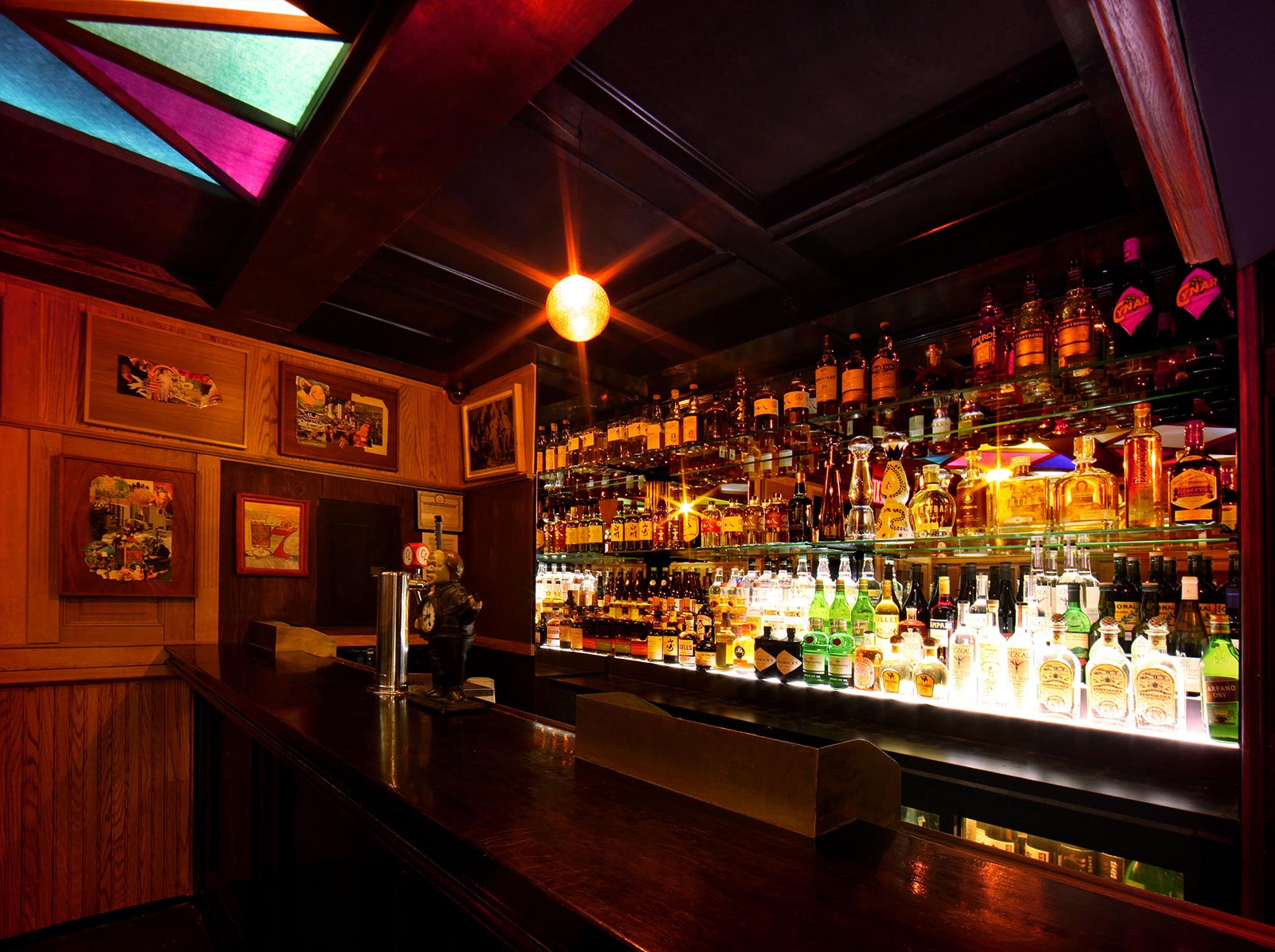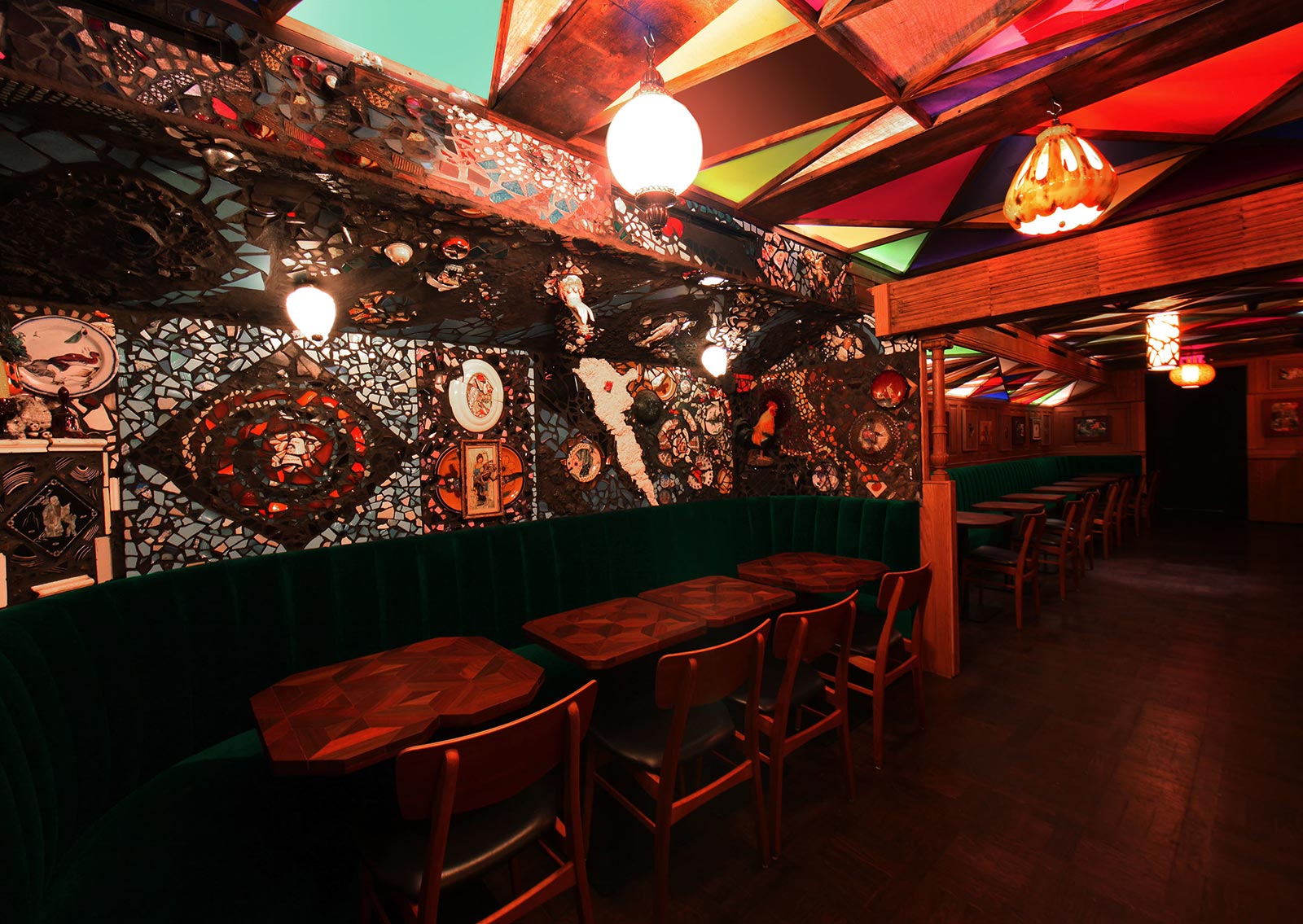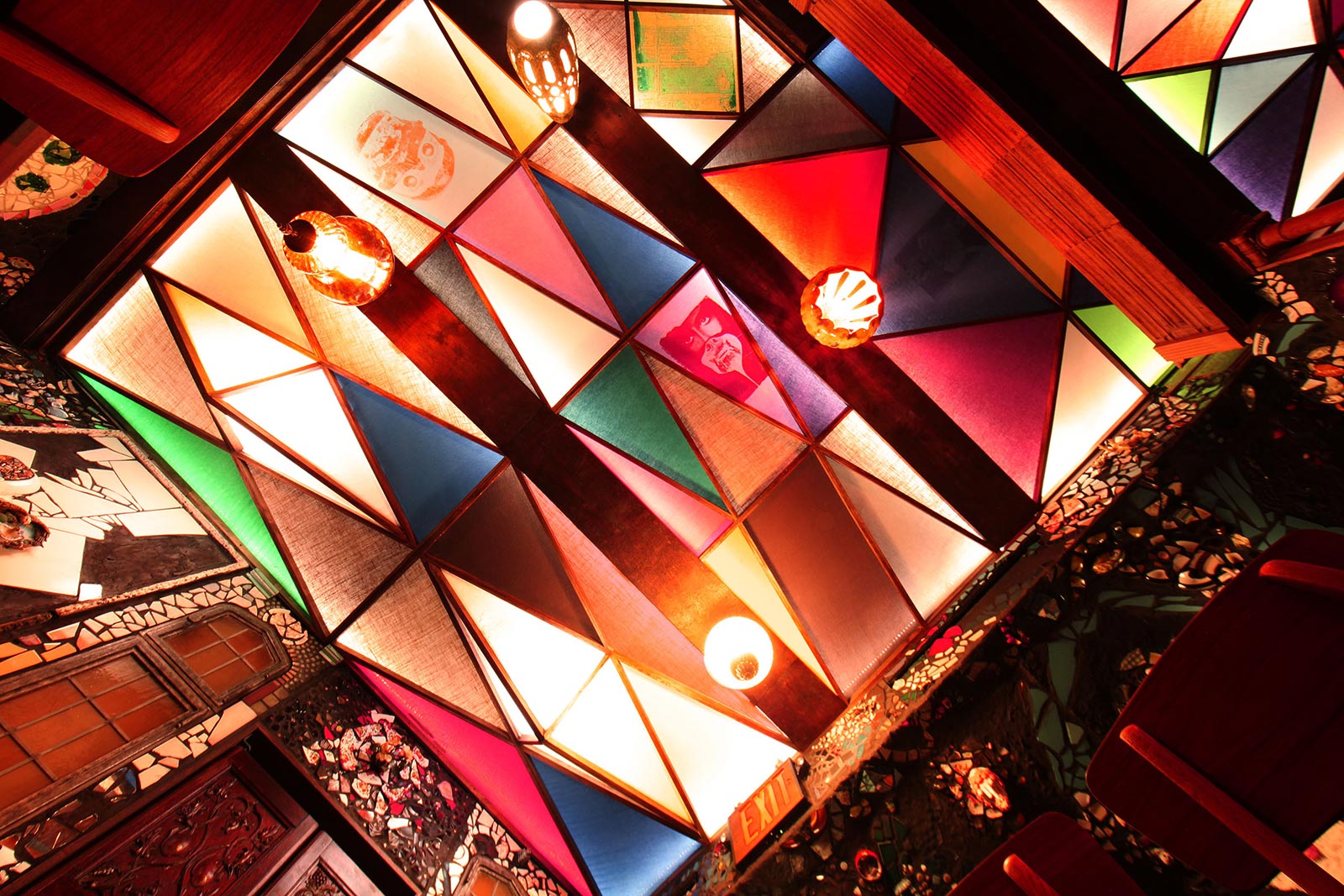Omakase-Style Cocktails Served Inside an Art Installation at Straylight
Jonah Freeman and Justin Lowe’s colorful works set the stage for Dorothy Elizabeth’s exemplary drinks

It’s certainly not uncommon to sit at a bar and ask the bartender for a recommendation. From the prestigious bars at The Ritz in Paris to Attaboy on the LES, bespoke cocktail offerings continue to manifest internationally. But there’s something different about Straylight, a brand new cocktail bar tucked underneath Juku in NYC’s Chinatown. Juku as a whole defies expectation, morphing the old Le Baron space into three distinct sub-venues. There’s an omakase sushi counter loft, a seated izakaya hot spot with a diverse selection of raw and cooked items, and of course, the bar down below. Max Levai, the director of Marlborough Contemporary, is one of the co-owners and designers. He tapped gallery iconoclasts Jonah Freeman and Justin Lowe to envision Straylight and the result is a kaleidoscopic interpretation of one of their exhibitions. In the midst of all the colorful art, acclaimed bartender Dorothy Elizabeth mixes up omakase-style cocktails for guests.

As a whole, there’s an interconnectedness to the three spaces, unified by further, transformative art zones. “The concept was really born out of realities of the space and the three distinct zones within it—mezzanine, dining room and basement—as well as general admiration for Kazuo Yoshida’s practice,” Levai explains. “Each of the individual components of the experience are practically and conceptually integral to the concept holistically. We are motivated by people’s expectations and how this space nestled into a sleepy forgotten Chinatown block challenges what people think a restaurant can be,” he adds, noting this means one can engage with Juku in different ways in the same visit.

Levai envisions the use of the subterranean cocktail bar Straylight in multiple ways.
“We see this as a place for the neighborhood to engage with, a place one can go have a drink and snack on a whim, a place where we hope groups will gather less formally than in our dining room.” The decor lends the space a highbrow whimsicality, but in no way is it isolating. A warmth pervades the space—and the type of snugness one hopes for in bar. A slender countertop let’s a select few watch a master at work. A small smattering of tables welcomes more guests.

And then there are the cocktails themselves.”Straylight is a true meshing of world renown Jamie Jones and myself into one program. Jamie set the tone and left his mark on the a la carte menu, while I leave mine on the cocktails,” Dorothy Elizabeth says. The development here is fundamental to understand what Straylight offers. “The inspiration for the core cocktail menu is entirely Jamie. I came to project relatively late. Our collaboration came by dialing in the drinks. We’d work through different iterations of the same cocktails and decide upon the final presentation with the entire Straylight team.”

“On the other hand, the omakase cocktail menu is entirely me,” she continues. “The concept of coursing out dealer’s choice cocktails is something I have honed in Detroit and am known for. My style of drinks is flavor-driven with a firm backbone in the chemistry world. I do not stick to an archaic formula, but play more toward the balance of flavors through salinity, texture, and utilizing savory techniques.” As wild and flavorful each drinks is, they’re all lower in alcohol by volume; in essence, each is a half-drink in potency. This means four courses—or six—are entirely possible.

The process involves more than Elizabeth’s mixing mastery. She speaks with each guest to best understand their interests. “I am by no means a psychic,” she says, “so I find that the best way to read my guests is through conversation. I ask a lot of questions upfront on allergies, dislikes, and how they are feeling. Ultimately the guest provides the inspiration so that each experience is unique and customized.” She does have go-to cocktails—for instance a rye-driven Capitol Park with hopped grapefruit, bonal, cardamara and a burnt orange rose, or the vibrant Robinson with muddled bok choy and acetic acid among other greens—but these aren’t guarantees. “I do focus on seasonality, so I find myself at the market before work and picking out something fresh. A few weeks ago it was blood orange, last week it was bok choy, this week it is snap pea, and next week is a mystery,” she says.

Levai and Sebastian Quinn designed the Juku spaces, and the walls feature an international crop of artists like Lothar Hempel, Julius Von Bismarck, Tony Matelli, Eddie Fake, Susan Te Kahurangi King and Roe Ethridge. “Straylight is designed by Justin Lowe and Jonah Freeman, who are well known for their immersive installations,” Levai says—noting that this includes the stairwell into the space. “This is a rare example of their work that functions independently from the context of the museum and gallery world,” he adds.

“The art enhances everything,” says Elizabeth. “I love being in such an innovative space. Straylight makes people excited and sets a tone that cannot accurately be put into words. It is dynamic and creates a multi-sensory experience. I find the art installations are a source of inspiration for developing new cocktails.” When sitting at the bar, eyes do wander not only to the people filtering in and out, but to the walls and works of art one is continuously surprised to enjoy. The same can be said for every sip taken. This is most certainly one of the best places to get a drink in the city.
Straylight (32 Mulberry Street) is open Thursday through Saturday from 8PM to 2AM. Reservations are suggested for Juku, whereas Straylight welcomes a limited number of walk-ins only.
Images courtesy of Juku












